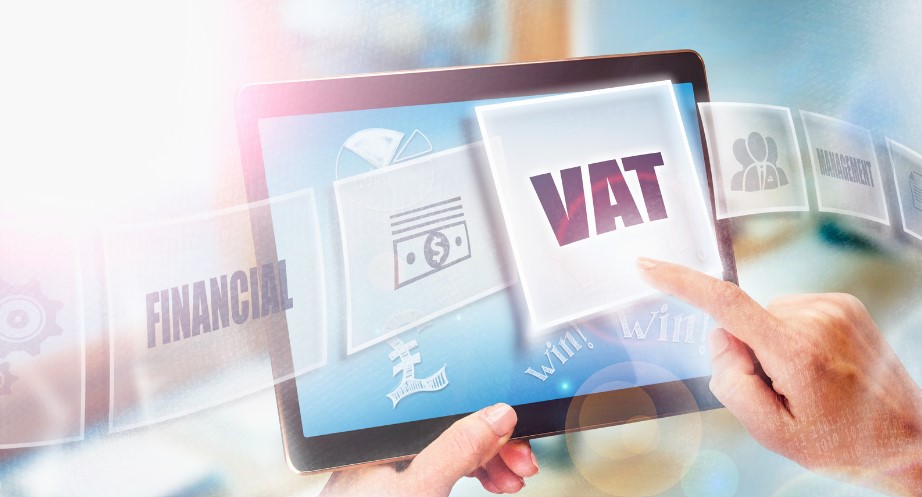VAT, or Value Added Tax, is a consumption tax charged on the sale of goods and services in the UK. It is an important aspect of the UK tax system, contributing to government revenue and funding public services. Understanding VAT rates and how they apply to different products and services is essential for businesses and individuals. Let’s learn how much is VAT in UK for every business.
How Much is VAT in UK?
In the UK, there are three different rates of VAT: standard rate, reduced rate, and zero rate. The standard rate is currently 20% and applies to most goods and services. This means that for every £100 of taxable sales, £20 is collected as VAT. The reduced rate is 5% and applies to specific goods and services, such as some health products and children’s car seats. The zero rate, charged at 0%, applies to items such as most food, books, newspapers, and children’s clothes.
It is important to note that businesses with a turnover of more than £85,000 must register for VAT. Registration is done with HM Revenue and Customs (HMRC) and businesses are provided with a unique VAT registration number. However, businesses can also choose to register for VAT voluntarily, even if their turnover is below the threshold.
By understanding the different VAT rates and thresholds, businesses can ensure compliance with the UK tax regulations and avoid any penalties. Additionally, VAT schemes are available to help businesses simplify VAT calculations and reporting. These schemes have specific eligibility criteria and can provide benefits in terms of simplifying VAT processes.
VAT Thresholds in the UK
When it comes to VAT registration in the UK, understanding the threshold is crucial. For the 2020/21 tax year, the VAT registration threshold in the UK is set at £85,000. This means that businesses with a turnover exceeding £85,000 in any rolling 12-month period must register for VAT.
However, it’s important to note that businesses can also choose to register for VAT voluntarily, even if their turnover falls below the threshold. This can be beneficial for businesses that want to claim back VAT on their purchases or project a more professional image to clients and customers.
VAT registration is based on taxable turnover, which refers to the total value of goods and services sold that are liable for VAT. It’s important to note that exempt items and VAT-free goods and services are not included in the taxable turnover calculation.
Here’s a breakdown of the VAT thresholds in the UK:
- VAT registration threshold: £85,000
- Voluntary VAT registration: Below the threshold
For businesses approaching or exceeding the VAT threshold, it’s essential to monitor turnover closely and take the necessary steps for VAT registration when required. Being VAT registered brings benefits such as the ability to reclaim VAT on eligible purchases and the potential for improved credibility in the eyes of clients and customers.
Next, we’ll explore the different VAT schemes available in the UK and how they can help businesses simplify their VAT calculations and reporting.

VAT Schemes in the UK
There are different VAT schemes available in the UK to help businesses simplify VAT calculations and reporting. These schemes have specific eligibility criteria and can streamline the VAT process for businesses, minimizing the administrative burden and ensuring compliance with HMRC regulations.
1. Flat Rate Scheme
The Flat Rate Scheme is designed for businesses with a turnover of up to £150,000 (excluding VAT). It allows eligible businesses to pay a fixed percentage of their turnover as VAT to HMRC. The advantage of this scheme is that it simplifies VAT calculations, as businesses do not need to report the VAT on each sale or purchase individually. However, businesses using this scheme cannot reclaim VAT on purchases unless they qualify for specific circumstances outlined by HMRC.
2. Cash Accounting Scheme
The Cash Accounting Scheme is ideal for businesses that experience cash flow challenges. It allows businesses with a turnover below £1.35 million to account for VAT based on when payment is received from customers, rather than when invoices are issued. This scheme provides flexibility as businesses only need to pay VAT to HMRC when they have received payment from their customers.
3. Annual Accounting Scheme
The Annual Accounting Scheme is suitable for businesses with a turnover below £1.35 million. It allows businesses to make annual VAT returns and payments instead of quarterly ones. Instead of submitting VAT returns every three months, businesses registered under this scheme only need to submit one return a year, streamline their administrative process, and potentially facilitating cash flow management.
4. Retail Schemes
Retail Schemes are designed for businesses in the retail sector that sell a mixture of goods liable for different VAT rates. There are two main types of Retail Schemes: Point of Sale (PoS) Scheme and Direct Calculation Scheme (DCS). The Point of Sale Scheme calculates VAT at the point of sale, while the Direct Calculation Scheme calculates VAT on the total value of goods at the end of the VAT accounting period. These schemes ensure accurate VAT calculations for businesses in the retail sector, where products are subject to different VAT rates.
For more information on VAT schemes and their eligibility criteria, businesses can refer to the official HMRC website.
| VAT Scheme | Eligibility Criteria | Benefits |
|---|---|---|
| Flat Rate Scheme | Turnover below £150,000 (excluding VAT) | Simplified VAT calculations and reporting |
| Cash Accounting Scheme | Turnover below £1.35 million | Flexibility in VAT payment based on received payments |
| Annual Accounting Scheme | Turnover below £1.35 million | Reduces the frequency of VAT returns to once a year |
| Retail Schemes | Businesses in the retail sector with goods subject to different VAT rates | Accurate VAT calculations for mixed goods at different VAT rates |

Temporary Reduction in VAT Rates for Hospitality and Tourism
Due to the impact of the COVID-19 pandemic on the hospitality and tourism industry, the UK government introduced a temporary reduction in VAT rates for businesses in these sectors. From 15th July 2020 to 31st March 2021, the standard VAT rate of 20% was reduced to 5% for hospitality and tourism businesses. This reduction aimed to support the industry’s recovery.
Businesses registered for VAT and normally charging the standard rate apply the temporary 5% VAT rate to eligible products and services. This measure has provided crucial relief for businesses in the hospitality and tourism sectors, helping to stimulate consumer demand and encourage spending. The reduced VAT rate has made products and services more affordable for customers, incentivizing them to support these industries during a challenging time.
The temporary reduction in VAT rates for hospitality and tourism has had a positive impact on businesses, helping them to offset some of the financial pressures caused by the pandemic. The reduced VAT rate has enabled businesses to maintain competitive pricing, attract customers, and generate revenue to sustain their operations.
This temporary VAT rate reduction has played a vital role in supporting the recovery of the hospitality and tourism sectors in the UK. By easing the financial burden for businesses and incentivizing consumer spending, it has helped to protect jobs and ensure the long-term viability of these industries.
The temporary reduction in VAT rates for hospitality and tourism has provided significant benefits to businesses and consumers alike. It has allowed businesses to recover and thrive, while making products and services more accessible and affordable for customers. As the industry continues to navigate the challenges posed by the pandemic, the temporary VAT rate reduction has served as a lifeline for businesses and a catalyst for economic recovery.
VAT on Imports and Exports
VAT, or Value Added Tax, is applicable to imports and exports in the United Kingdom. Understanding how VAT is calculated and applied during these transactions is essential for businesses engaged in international trade.
Importing Goods from the EU:
When importing goods from EU countries, businesses are generally required to pay UK VAT. The VAT rate is determined by the UK government and is applicable even if the goods have already been subject to VAT in the country of purchase. It is important to note that businesses registered for VAT can reclaim this VAT as input tax on their VAT returns.
Importing Goods from Non-EU Countries:
When importing goods from non-EU countries, VAT is usually charged at the same rate as if the goods were purchased within the UK. For example, if the standard rate of VAT is 20%, then the same rate applies to imported goods. As with EU imports, businesses registered for VAT can reclaim this VAT as input tax on their VAT returns.
Exporting Goods and Services:
The VAT treatment for exports depends on various factors, including whether the customer is VAT registered and whether goods or services are being exported. In general, if goods or services are exported outside of the EU, they are usually zero-rated for VAT. This means that no VAT is charged on the sale, and businesses can reclaim the VAT they have incurred as input tax. However, it is crucial to comply with VAT rules and obtain the necessary evidence to substantiate the zero-rating.
VAT Refunds:
VAT refunds are available under certain circumstances. For non-EU residents visiting the UK, VAT refunds can be claimed for items purchased in the UK when leaving the country. Similarly, EU residents leaving the EU for a period of 12 months or more can claim VAT refunds for eligible items bought in the UK. To claim a VAT refund, visitors must follow the necessary procedures and provide the required documentation.

| Import/Export Scenario | VAT Treatment |
|---|---|
| Importing Goods from the EU | UK VAT is generally payable. Registered businesses can reclaim the VAT as input tax. |
| Importing Goods from Non-EU Countries | VAT is charged at the same rate as if purchased in the UK. Registered businesses can reclaim the VAT as input tax. |
| Exporting Goods and Services outside the EU | Goods and services are usually zero-rated for VAT. Registered businesses can reclaim the VAT as input tax. |
| VAT Refunds for Visitors | Non-EU residents and EU residents leaving the EU for 12 months or more can claim VAT refunds for eligible items bought in the UK. |
Understanding the VAT implications when importing and exporting goods and services is crucial for businesses to ensure compliance and effectively manage their VAT responsibilities.
Conclusion
VAT, or Value Added Tax, is an important tax in the UK that is applied to the sale of goods and services. It is crucial for businesses and individuals to understand VAT rates and how they are applied to different products and services. The VAT registration threshold determines when businesses must register for VAT, and it is essential to comply with this requirement to avoid penalties.
VAT schemes provide options for businesses to simplify their VAT calculations and reporting. These schemes, such as the Flat Rate Scheme, Cash Accounting Scheme, Annual Accounting Scheme, and Retail Schemes, offer specific eligibility criteria and benefits tailored to different types of businesses. Understanding and utilizing these schemes can help streamline VAT processes and improve efficiency.
In times of challenging circumstances, temporary VAT rate reductions can provide much-needed support to specific sectors. For example, during the COVID-19 pandemic, the UK government introduced a temporary reduction in VAT rates for hospitality and tourism businesses, aiming to aid their recovery. These temporary measures demonstrate the flexibility and adaptability of VAT regulations in response to economic conditions.
For businesses involved in importing and exporting goods, VAT considerations are crucial. The rules for VAT on imports and exports differ depending on whether the goods are from the EU or non-EU countries. Understanding the specific VAT requirements for international trade can help businesses avoid unnecessary costs and complications.
In certain circumstances, VAT refunds are available in the UK. Non-EU residents and EU residents leaving the EU for 12 months or more can claim VAT refunds for items purchased in the UK. Online tools like VAT calculators can assist businesses and individuals in accurately calculating VAT amounts and ensuring compliance with VAT regulations.
In conclusion, understanding VAT is essential for businesses and individuals in the UK. Familiarizing oneself with VAT rates, VAT registration requirements, VAT schemes, temporary VAT rate reductions, import and export considerations, and VAT refund opportunities can help optimize VAT processes, ensure compliance, and manage costs effectively.




